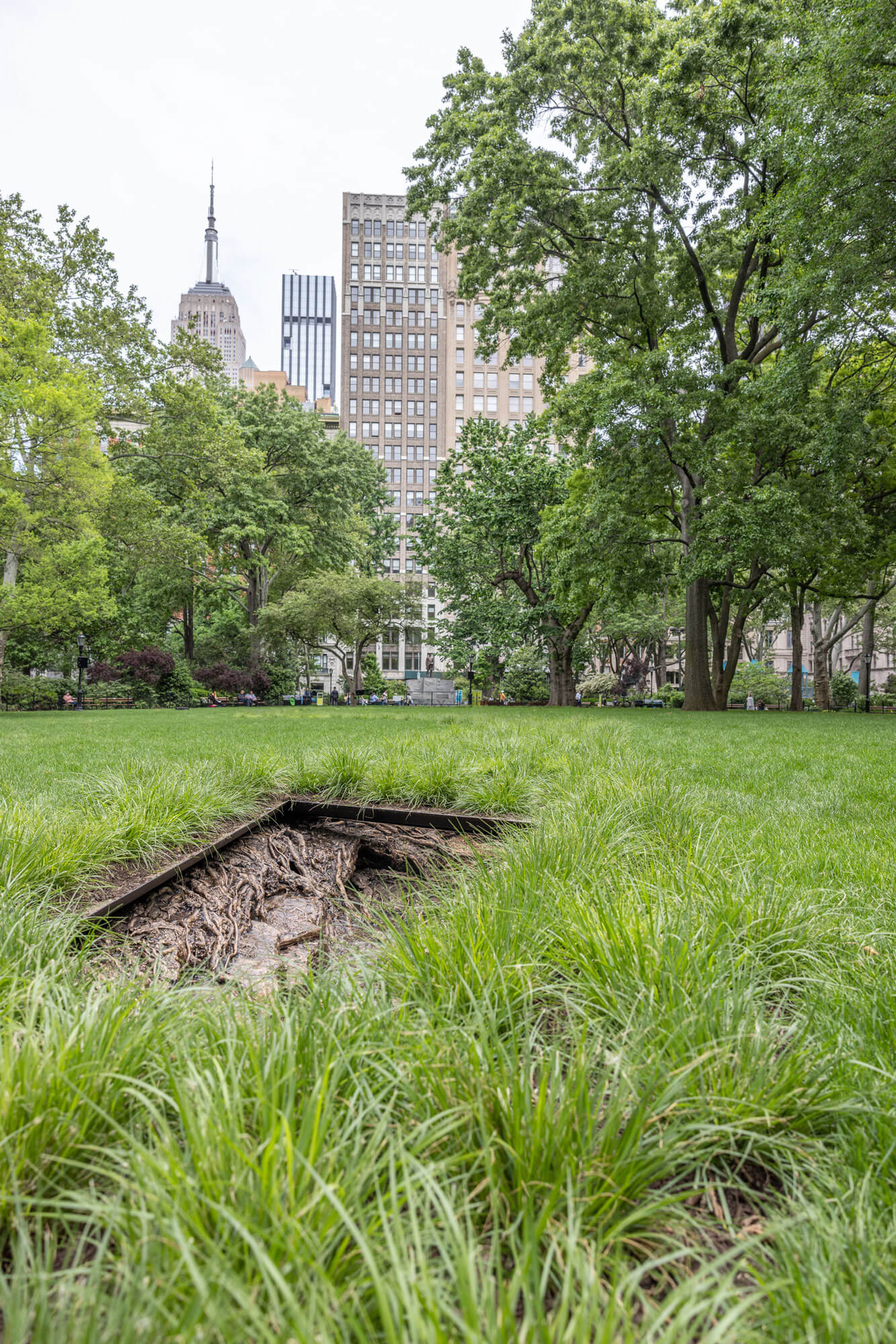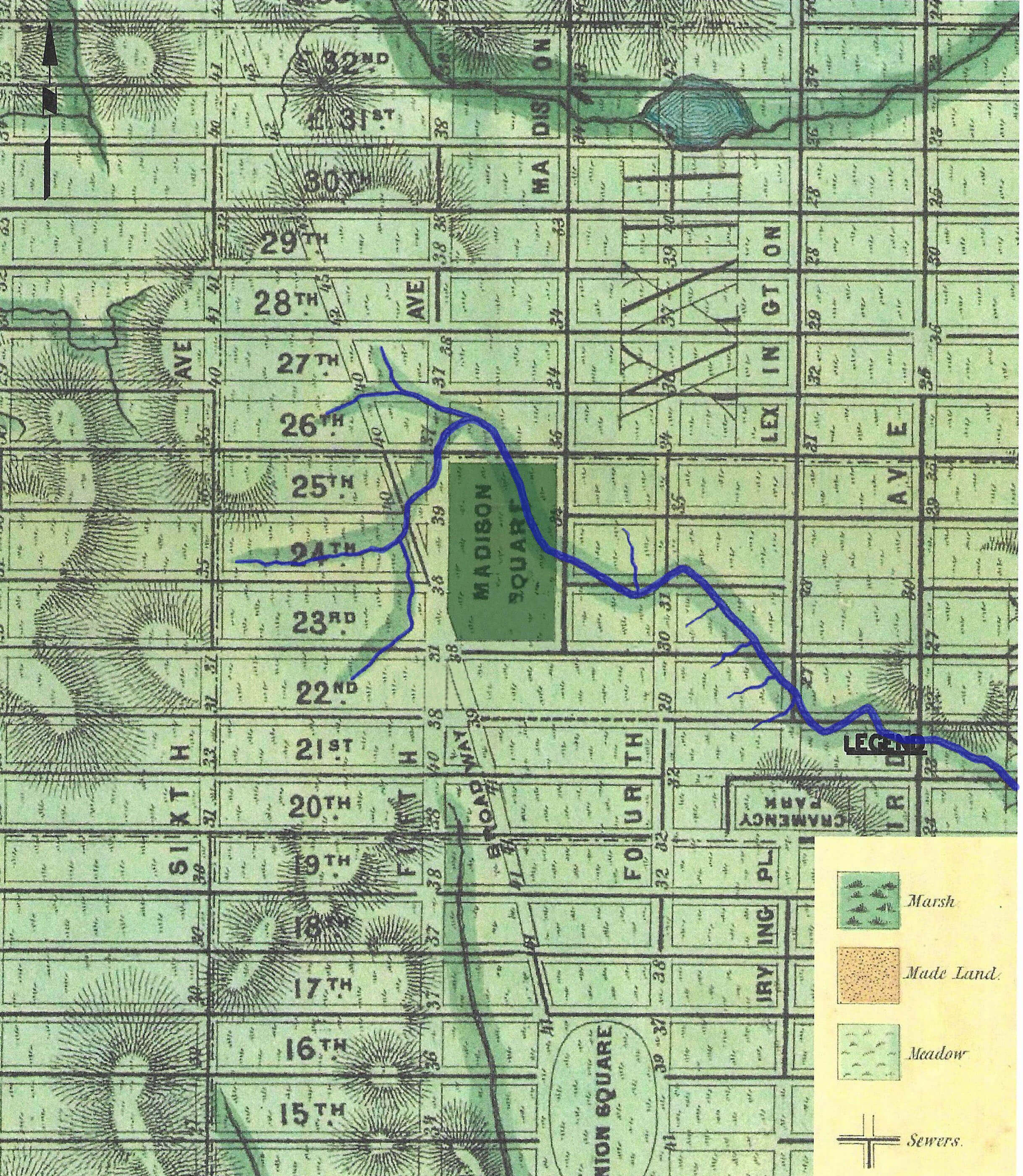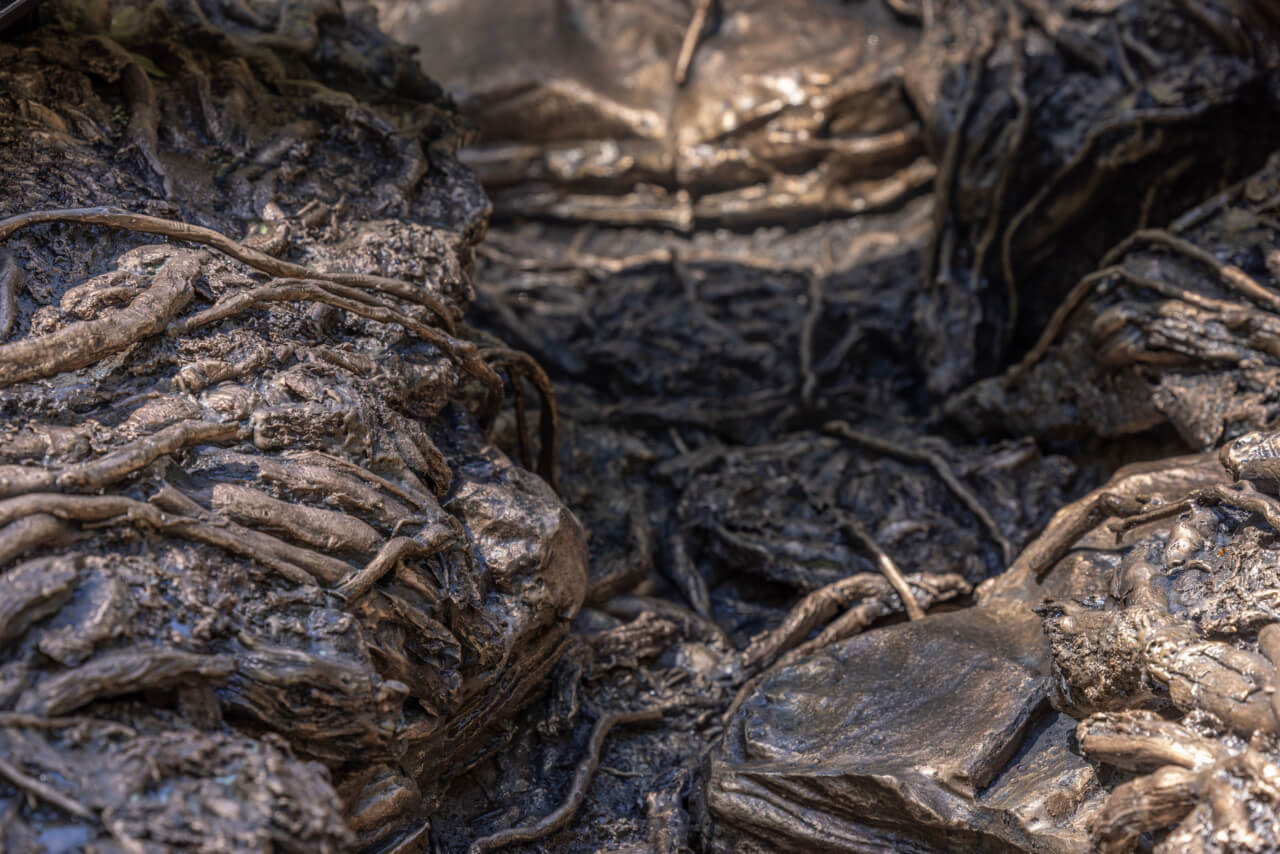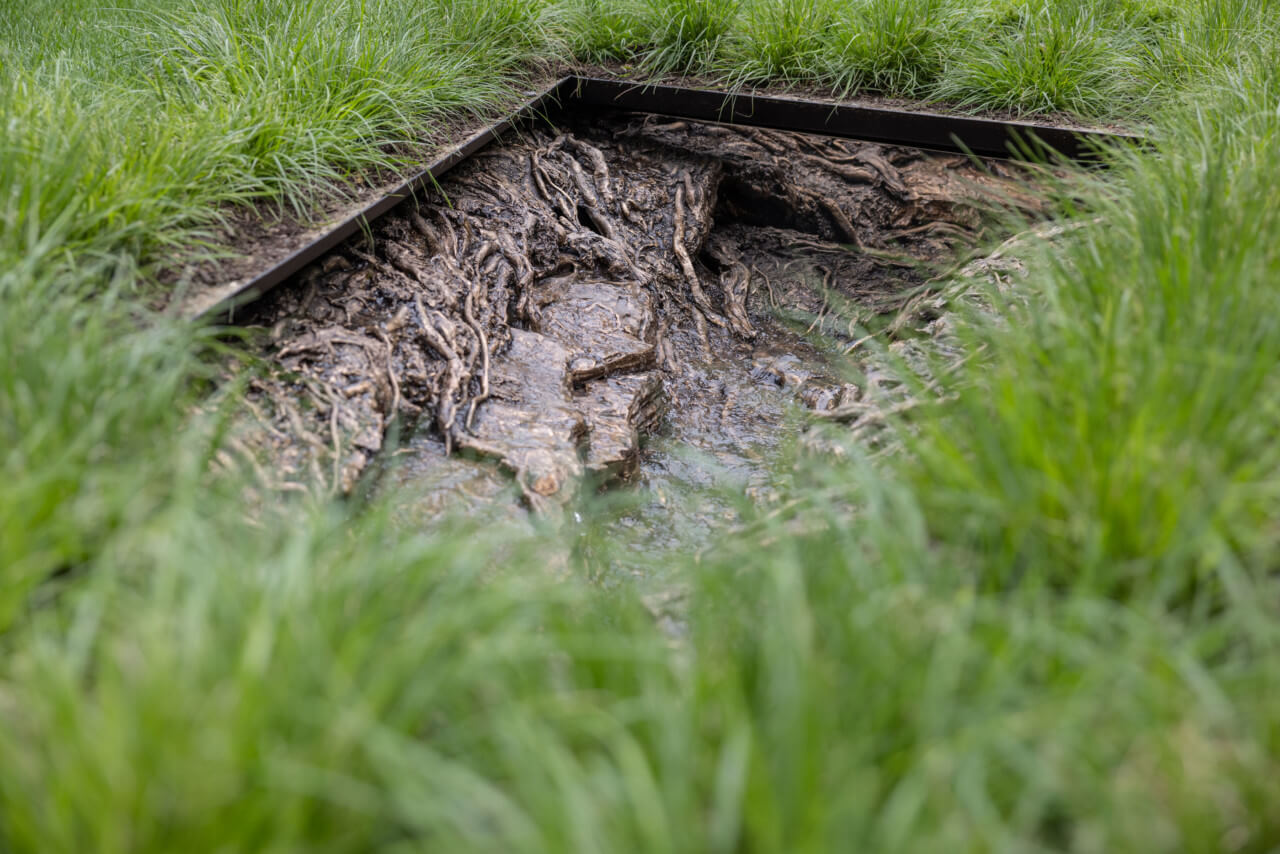From the walkway lining the perimeter of the oval lawn in Madison Square Park in Manhattan, Spanish installation artist and sculptor Cristina Iglesias’s new public art installation Landscape and Memory looks like a growth of weeds snaking through the well-kempt grass. But upon closer inspection, visitors to the 6.2-acre green space will discover that what looks like weeds is really a fountain grass formation giving way to five bronze reliefs cut with flowing streams of water.
First announced last December, the work made its public debut yesterday, June 1, as the first temporary public installation by Iglesias in the United States.
The subterranean sculptures themselves are an invitation for visitors to pause and reflect on the ground under their feet. Each of the five embedded reliefs is bracketed inside a rectangular frame and placed in sequence with long intervals of fountain grass in between. The hyperrealistic bronze sculpture could easily pass for a muddy creek—the only giveaway being that it dazzles in the sunlight. To heighten the realism, Iglesias used mirrors on each end to give the illusion that the bronze sculpture is continuous underneath the grass. In a city of shiny supertall towers, the artist’s quiet, subterranean bronze pieces are a dramatic break from the norm. Yet, the sculpture’s sunkenness is not to be confused with weakness or withdrawal.

“I have asked audiences to slow down and grant my work perhaps more time than what they are used to, looking at a water sequence change,” wrote Iglesias in her artist statement, “[I] have developed work that concentrates on ideas of what might lie underneath us, of what might grow rhizomatically around us, of underground waters that might still flow and ebb if unveiled.”
Landscape and Memory was a result of extensive collaboration—many Zoom calls and even more emails—between Iglesias’s studio in Madrid and the Madison Square Park Conservancy, Brooke Kamin Rapaport, deputy director and Martin Friedman Chief Curator of the nonprofit park conservancy, told AN. Renderings for the sculptures were conceived in Iglesias’s studio, realized in a foundry in Northern Spain, and shipped to the park for installation, but Iglesias did much of her research in New York. She specifically studied historic maps that document the course of the Cedar Creek that once flowed through what’s now Madison Square Park.
“What she is bringing forth here is this credible power of nature and survival of nature,” Rapaport said.

The opening of Landscape and Memory also kicks off a series of events. On Friday, June 3, Iglesias will be the keynote speaker at the Conservancy’s annual public art symposium that this year is entitled Unearthing Public Art. The public will also be able to enjoy a summer music series from Carnegie Hall and, in the fall, performances with downtown art center The Kitchen, both of which will be held within and feature work in response to Iglesias’s installation.
Landscape and Memory will be on view through December 4. More information about the events and exhibition can be found here.















